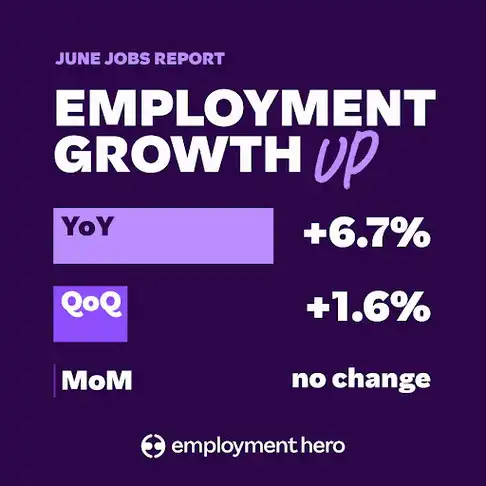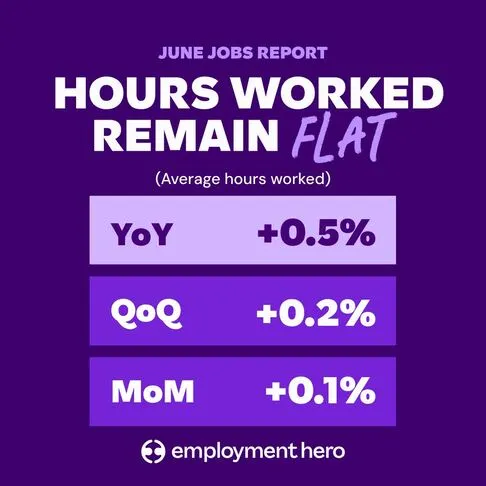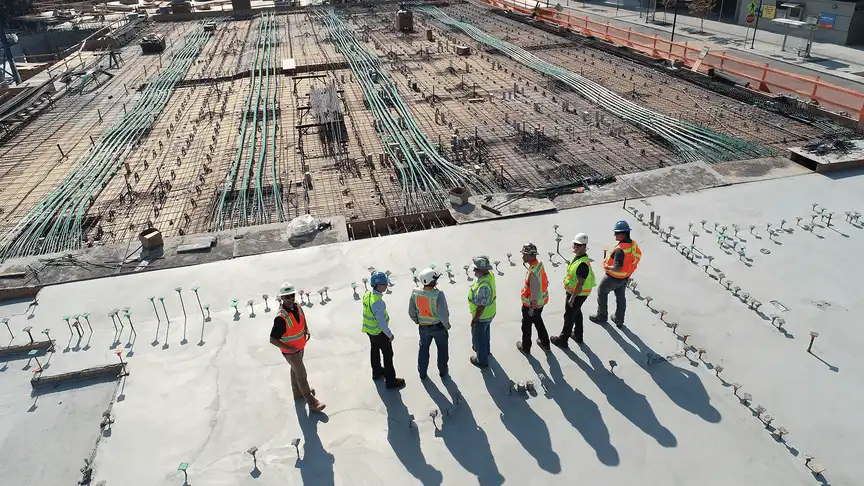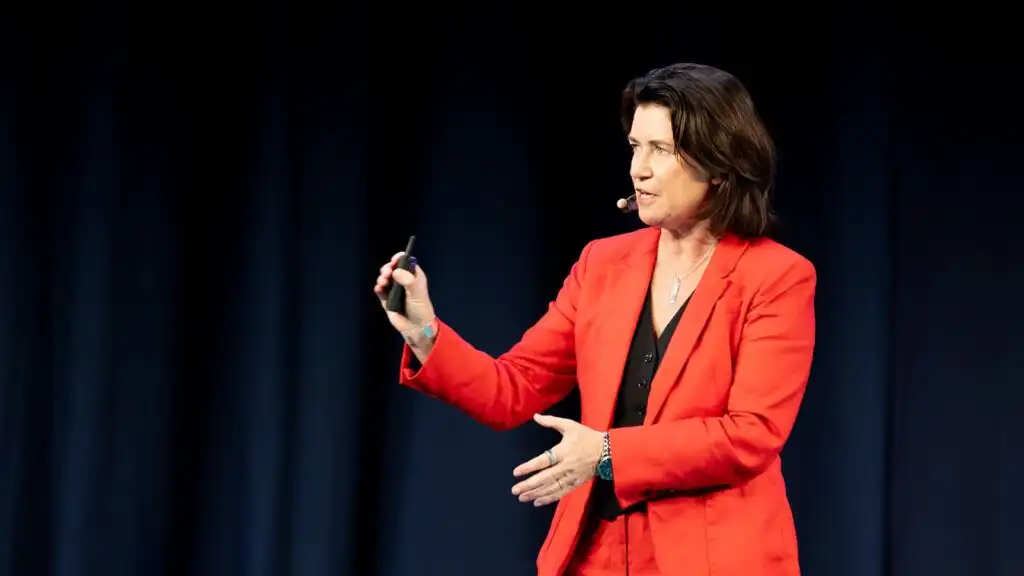Australia’s job boom rolls on, but flat hours and slowing pay rises raise new questions about productivity and equity.
Australia’s SME job market continues to boom, but there’s a catch, workers aren’t clocking more hours, and younger Australians are starting to fall behind on wages.
Employment Hero’s AU June 2025 Jobs Report, which draws insights from real-time payroll data across thousands of SMEs, shows national employment up 6.7% year-on-year. It’s a figure that confirms sustained recovery and strength in hiring, particularly among small and medium-sized businesses. But average hours worked rose just 0.5% over the same period, and median wage growth is starting to slow, up only 0.3% month-on-month despite a mandated 3.5% minimum wage hike and a 0.5% increase in superannuation in July
We’re seeing a clear cost-output disconnect,” says Ben Thompson, Chief Executive Officer, Employment Hero. “Businesses are paying more per head due to regulatory changes, increased wages but they’re not getting more hours or higher output in return.”

The teenage workforce is booming
Nowhere is this paradox more visible than among Australia’s youngest workers. Employment among 14–17-year-olds surged 31.2% year-on-year, with their average wages rising 10.2% the highest increase among any age group.
But even with these gains, Gen Z as a whole is starting to feel the crunch. While 18–24-year-olds saw a 19.1% rise in employment, their wage growth trailed older cohorts. Median salaries for 35–54-year-olds remain around $15 per hour higher than those of younger workers.
“SMEs are favouring teen hires because they’re cost-effective and willing to work,” says Thompson. “But we’re seeing the early signs of a generational pay gap widening. If businesses aren’t investing in the next generation’s career development, we’re looking at long-term challenges in talent retention.”

Sectors fuelling the surge
Construction and Trade Services led job growth in June, up 6.9% YoY, closely followed by Healthcare and Community Services at 6%. The rise in demand reflects increased infrastructure spending and a strong pipeline in essential services. Wages in Science and Technology roles topped all industries, with a 7.8% annual growth rate.
But overall wage momentum is easing. While median salaries are up 5.1% YoY, month-on-month gains have slowed to just 0.3%. In contrast, casual jobs saw an 11.7% rise in headcount but a 0.2% drop in hours worked.
This caution reflects the same tension playing out in the SME workforce. Businesses are feeling the squeeze, but the data isn’t consistent enough to shift confidently toward expansion or consolidation.

The hours-worked puzzle
For all the headline growth, the lack of movement in hours worked paints a conflicting picture. Full-time work remained flat year-on-year. Part-time hours grew just 0.7%, and casual hours dipped slightly by 0.2%.
“June’s data exposes the reality behind Australia’s job growth: we’re adding more people to payroll, but not more hours. That means higher costs without higher output.
For SMEs, it’s a triple hit, wages are up due to the minimum wage and super changes, compliance is more complex, and yet the average employee is working roughly the same hours as a year ago.
This isn’t just a staffing strategy, it’s a budget survival tactic. More hands on deck, fewer hours per person, and just enough coverage to manage demand. But that’s a fragile model of output that doesn’t lift,” Thompson added.
Looking ahead
SMEs are navigating a tightrope. The June data offers reasons for optimism hiring is strong, wage gaps are being acknowledged, and regional economies like WA and QLD are driving national momentum.
But the path forward requires balance. Sustained support for SMEs, smarter workforce planning, and targeted relief on rising business costs will determine whether this job boom translates into lasting prosperity or simply becomes a costly reckoning for employers already stretched thin.
Read Employment Hero’s AU June 2025 Jobs Report here


























